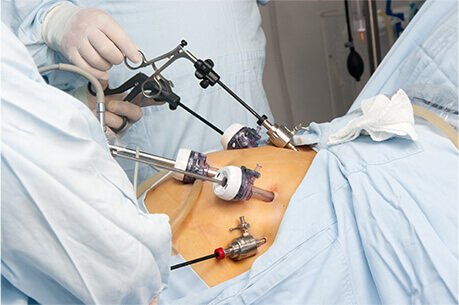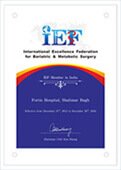Bariatric Surgery or weight loss surgery is done to help you lose excess weight by making changes to your digestive system.
Gastric bypass is one of the most common types of bariatric surgeries or weight loss surgeries being performed all over the world. Gastric bypass surgery is also done to reduce your risk of life-threatening weight-related health problems, including:
- Type 2 Diabetes Mellitus
- Heart disease
- High blood pressure
- Severe sleep apnea
Gastric bypass and other weight-loss surgeries are typically done only after you’ve tried to lose weight by improving your diet and exercise habits.
In general, gastric bypass and other weight-loss surgeries could be an option for you if:
- Your body mass index (BMI) is 40kg/m2 or higher.
- Your BMI is 35 to 40 kg/m2 and you have a serious weight-related health problem, such as type 2 diabetes, high blood pressure or severe sleep apnea. In some cases, you may qualify for certain types of weight-loss surgery if your BMI is 30 to 34 and you have serious weight-related health problems.
This surgery requires permanent changes to lead a healthier lifestyle, and long-term follow-up plans that include monitoring your nutrition, your lifestyle and behavior, and your medical conditions.
Risks of Gastric Bypass Surgery:
Risks associated with the surgical procedure are few and rare. They might include:
- Excessive bleeding
- Infection
- Blood clots in your legs
- Lung or breathing problems
- Leaks in your gastrointestinal system
All the above mentioned risks and complications can be identified early and taken care of only at a high volume and experienced center with staff especially trained in Bariatric Surgery.
Long term risks and complications of weight-loss surgery vary depending on the type of surgery. They can include:
- Bowel obstruction
- Dumping syndrome, causing diarrhea, nausea or vomiting
- Gallstones
- Hernias
- Low blood sugar
- Malnutrition
- Ulcers
- Vomiting
After gastric bypass and other types of weight-loss surgery the diet begins with liquids only, then progresses to ground-up or soft foods, and finally to regular foods.
You’ll also have to undergo frequent and regular medical checkups to monitor your health in the first several months after weight-loss surgery. You may need laboratory testing, blood work and various exams at fixed intervals to monitor the nutritional profile.
You have to keep all of your scheduled follow-up appointments after weight-loss surgery. It is mandatory to see your doctor immediately for any unusual symptoms or complications. You don’t need to weigh yourself frequently. Weight is monitored by the bariatric nurse and dietician at regular intervals. You might not lose enough weight or regain weight after any type of weight-loss surgery, even if the procedure itself works correctly. This weight gain may be due to loss to follow up or excessive liquid calorie intake. To help avoid regaining weight, you must make permanent healthy changes in your diet and get regular physical activity and exercise and follow all the instructions by your bariatric dietician.







